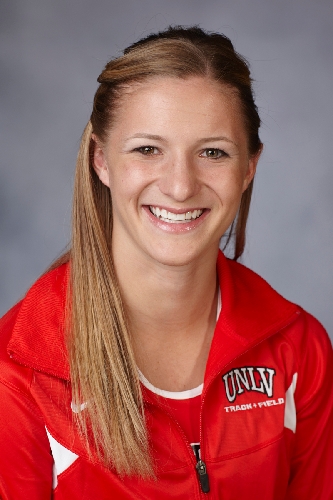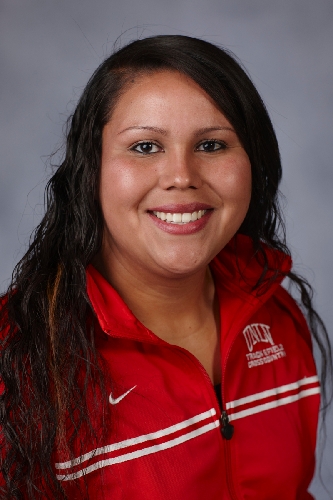Unique challenges await UNLV indoor track season
Some love it and some hate it, but everyone on the UNLV track and field team seems to understand the value of the upcoming indoor season.
The Rebels travel to Flagstaff, Ariz., to open their four-meet season at the Mountain T's Invitational on Jan. 27, and most view the five-week stretch of indoor work as preparation for outdoor competition.
"Indoor season is fun in its own way," senior thrower Danielle Rios said. "It's short, and it's a great way to get back into the competitive spirit. But I'm definitely looking forward to the outdoor season."
Junior sprinter Emily Blok generally agreed, adding that indoor competition offers obstacles not seen in the spring.
"It can be kind of a mind game," said Blok, who as a native Coloradoan spent considerable time training and competing indoors as a youth. "The 200 meters is usually just one turn, but indoors it's a full lap. But generally 200 meters is 200 meters."
However, not all indoor facilities are the same size, which can lead to some of the hate factor. While the tracks usually are 200 meters, Northern Arizona and Air Force feature 300-meter tracks.
For the runners, the extra turns take extra time. "It does slow you down a little," Blok said. "The times are slower, but everyone's on the same track."
Field events are limited to the shot put and weight throw, since the discus, hammer and javelin fly too far for the small field facilities to contain.
Rios, who throws the shot in the indoor season, said there are other inconveniences. "The indoor rings we throw on are wood," she said. "They can be slippery, which makes you be a little smarter about your technique."
Blok said she appreciates the indoor opportunities but admitted that she also will be happy to see the season come to an end. "There is kind of a sense of relief when you make it to the outdoor season," she said. "It feels like you're competing in standard track events again."
Rebels coach Yvonne Scott said she emphasizes outdoor competition, noting that some of her team's strongest events are not held indoors. "For us to be on the West Coast, indoor is not looked upon as a big deal," she said. "On the East Coast, they have cold temperatures, so the indoor season is a big part of things."
UNLV, which was the laughingstock of the Mountain West Conference just five years ago, plans to use the next month to work toward its ultimate goal.
"We're definitely moving up, especially in outdoor," Blok said. "I think we have a very solid chance to finish in the top three (MWC) and this year maybe even (finish) No. 1."
The Rebels see an opportunity in the recent conference realignment. With perennial powerhouse Brigham Young out of the picture, the league's top spots appear up for grabs. "That could definitely open things up for us," Block said.
Such statements would have been unthinkable before Scott's arrival in 2007, but the program steadily has improved.
"Yvonne wants people to recognize us," said Rios, who has postseason NCAA aspirations. "She's all about us becoming great students and amazing athletes."
Scott said she has seen improvement but will look for even bigger things in the months ahead.
"We're always looking to improve," said the coach, whose team finished 32nd in the NCAA Outdoor Track and Field Championships last spring. "I think we've done that little by little, but we still have a long way to go. We especially want to send more people to the NCAAs, and I think we have the bodies to do that this season."
The Rebels will host the two-day UNLV Classic starting March 2 to begin their outdoor season.
Jeff Wollard is a freelance writer who writes for Rebels Report. He can be reached at jwolly@aol.com.























